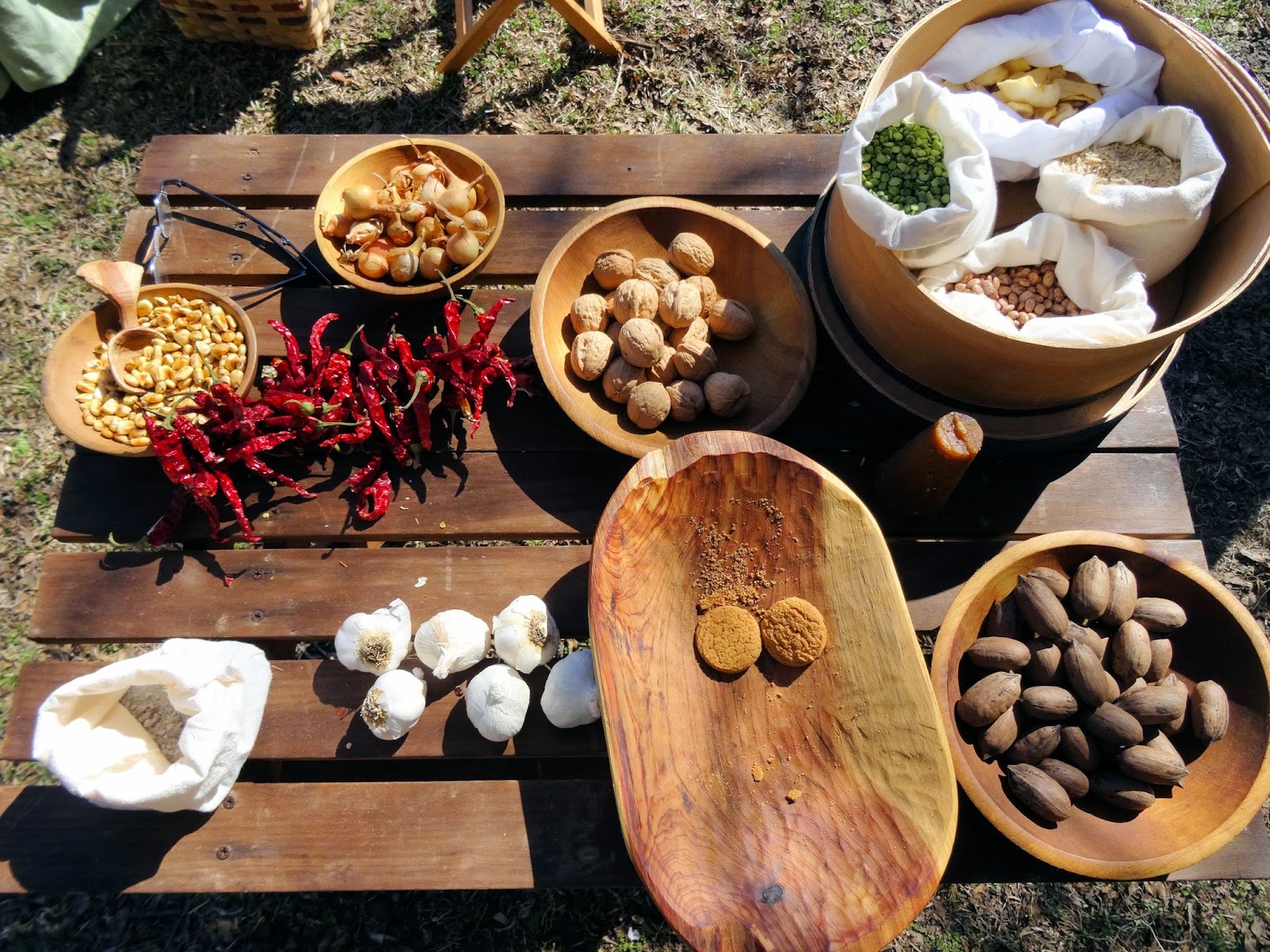Ten
minutes south of Spartanburg, SC we stepped 250 years back in time at the
Walnut Grove Plantation. Saturday was Living History Day and Lantern Tours at
the plantation, and we took opportunity of relatively warm and sunny weather to
explore this historic site. Established in 1767 by Charles and Mary Moore, the
property features a Manor, a kitchen house, a schoolhouse and a wheat house, and
is on the U.S. National Register of Historic Places.
 |
| Learning about colonial-time weapons |
In the
40 years they lived in Roebuck, Charles & Mary Moore raised ten children in
a house they built themselves. We joined the tour group to get an inside look
at the main house, and were shown from room to room while given an informative
talk about life on the plantation two hundred years ago.
 |
| The main house |
The
majority of the boys soon headed outside, but Lauris stuck with me for the
whole tour and enjoyed seeing how life was back in the day. We explored the
sleeping and living quarters, and had our questions about various tools and
other objects answered by a very knowledgeable guide. I was struck at how
sturdy and long-lasting the structure was, and the durability and functionality
of all the objects within.
 |
| Clockwise from top left: living room, the P's and Q's in the dining room, the food prep room, the master bedroom and the 2nd floor living space & bedroom |
From
the main house we headed into the kitchen house, kept separate from the main
house because of the dangers of fire from the cooking fireplace. I just can’t
imagine the difficulties of cooking for such a large family in such a primitive
setting; to think that the Moores were considered rather well-off at the time!
 |
| Typical food including dried corn and local salt |
This
is as far as we got with the tour group, and after splitting off we rejoined
our crew and continued our explorations, venturing closer to the campfire where
a militia was conducting drills and signing up members…
The
property was about 3,000 acres historically, a land grant from King George III.
Mr. Moore was a schoolteacher, and relied on a dozen enslaved African Americans
and his own large family to work the farm. During the Revolutionary War, the
Moores supported the Patriots and are mentioned in the history books because of
the 1781 raid by Loyalist William "Bloody Bill" Cunningham. The boys
got a demonstration of a period firearm to give a taste of the volatility of
the time: a black musket firing (thankfully) only black powder.
In
addition to the home and outlying buildings, visitors can also view the
property's cemetery and walk a nature trail that loops back to the pavilion. The
old road that leads to the cemetery used to continue west one mile to another
Moore family home, Fredonia. Thomas Moore - eldest son, Revolutionary War
soldier, brigadier general in the War of 1812 & member of Congress –
started construction of the home, which came under ownership of Andrew B.
Moore, the county’s first doctor, and then Thomas J. Moore, Confederate soldier
and state legislature. Fredonia burned down in 1977.
 |
| The schoolhouse |
We lingered
awhile in the cemetery with its mature walnuts; it gave an idea of how the entire
area could have looked two hundred years ago.
 |
| Headstones were expensive, and so it's common to see fieldstones marking graves in old cemeteries |
The
nature walk wound through some pretty timber as well, although the walnuts here
were accompanied by sweetgum, oak and other species. The trail with its grand
trees and bordering creek proved a balm to the soul, a taste of my former life
with its gullies, bare hardwoods canopy and the sound of leaves crunching underfoot.
We
popped out at the pavilion, where there were a dozen colonial toys and games awaiting
us. We took turns playing the game of Graces and rolling hoops with the boys.
Because
we had missed Bubba’s BBQ it soon became clear that we would have to leave in
search of a meal to satisfy the appetites of the mini-militia we had in
accompaniment. It was a shame we would miss the lantern tours, which started at
6pm with tours every 30 minutes, but it was obvious we wouldn’t last that long,
even with two dozen games on hand. We thanked the lovely folks at Walnut Grove
Plantation before heading north for a quick stop at the European Market for
some Latvian & east European supplies, and eventually dinner at the Taste
of Thai in Spartanburg. It was a pleasant afternoon outdoors, although the boys
might have more interest in attending Festifall at the plantation, the event
that takes place the first weekend of October and features over 200 reenactors
along with music & dancing and activities such as toy making, cooking,
weaving, woodworking, basketry and candle dipping. However, for older children
and adults (especially history buffs!), Walnut Grove Plantation is an unique
opportunity to experience colonial history up close.




No comments:
Post a Comment